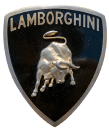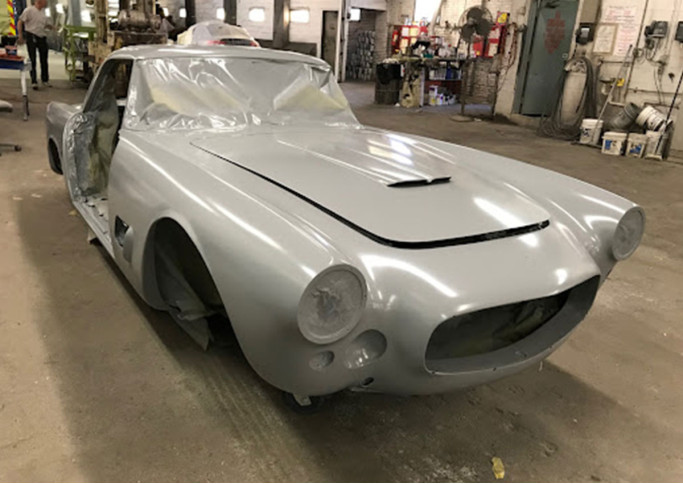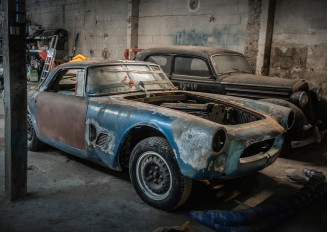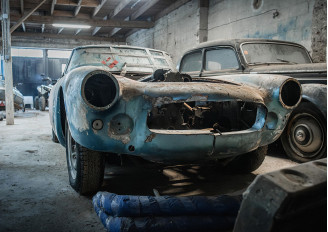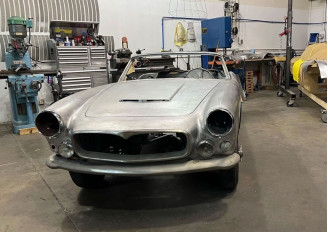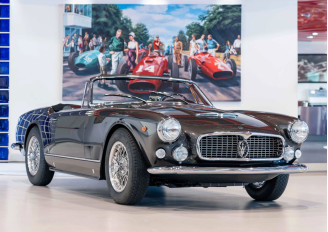Maserati 3500 GT Restoration Guide
Brief Profile of the Maserati 3500 GT and Key Differences
The Maserati 3500 GT (Tipo 101) is a series-production grand tourer built from 1957 to 1964. Coupés were bodied by Carrozzeria Touring using Superleggera technology (aluminum panels over a steel frame), while the roadster (Spyder) was by Vignale. Total production was about 2,226 units. From 1959, the 3500 GTi with Lucas mechanical fuel injection appeared. Transmissions included a ZF 4-speed on early cars and a ZF 5-speed later. Brakes evolved from drums to front discs (initially optional, later standard) and rear discs on later cars. For accurate restoration planning, determine the year, specification (carbureted GT or Lucas-injected GTi), body variant, and components typical for that year.
Documentation and Initial Audit of the Maserati 3500 GT
Objective: confirm provenance, equipment, and degree of authenticity.
- Verify VIN/chassis number in the AM101… format, body ID plates (Touring or Vignale), and engine and gearbox numbers.
- Record body variant and wheelbase (Spyder is shorter) and the presence of trim elements specific to your model year.
- Assess completeness: Jaeger instruments, Magneti Marelli electrics, Weber 42 DCOE carburetors or Lucas injection, correct brake and suspension brackets.
- Create a “risk map”: list of missing parts, photos of all markings, initial fault list for body, chassis, powertrain, transmission, and electrics.
Bodywork and Corrosion Risks: Superleggera Specifics
On Touring coupés, aluminum panels are mounted over a steel frame. Risks include galvanic corrosion where steel contacts aluminum; problem areas: sills, lower door and fender edges, trunk floor, and body-to-frame mounting points. For the Vignale Spyder (predominantly steel body with aluminum lids), monitoring dissimilar-metal contact points is also essential.
Recommended restoration workflow for the Maserati 3500 GT:
- Section-by-section removal of outer panels; inspection and local replacement of steel frame tubes; media blasting (sand/glass); conversion coating and primer compatible with aluminum.
- Geometry restoration observing factory gaps, seams, and edges; minimize filler.
- Corrosion protection at joints and fasteners; use isolating shims/barriers between dissimilar metals during reassembly.
Suspension, Steering, and Brake System
Suspension. Double wishbones in front, semi-elliptical leaf springs in the rear; hydraulic shock absorbers. In restoration, return to factory clearances and geometry. Polyurethane bushings are at the owner’s discretion (they affect NVH and steering feel).
Brakes. Early cars: Girling drums all around. Later: front discs appear as an option then become standard; late cars have rear discs. For concours restoration, retain the brake configuration correct to the chassis year; for driver-spec, all-disc setups using period-appropriate components are acceptable.
Wheels and Tires: Period Correctness
Factory steel wheels 16" (width ~6.5"); optional Borrani wire knock-offs. A common late-car tire spec is Pirelli Cinturato 185VR16. Budget for correct wheels and tires in advance: original Borranis are costly and scarce, significantly impacting project cost.
Powertrain: 3.5-L DOHC Inline-6 with Twin Ignition
The base engine features an aluminum block with liners, dual overhead cams, twin ignition (two plugs per cylinder, Marelli system), and dual fuel pumps. Induction is via three Weber 42 DCOE (3500 GT) or Lucas mechanical fuel injection (3500 GTi).
Restoration plan for the Maserati 3500 GT powertrain:
- Compression and leak-down prior to tear-down; inspect valve seats and guides; check head deck surfaces.
- Timing gear: chains, sprockets, tensioners; set cam timing; adjust valve clearances.
- Ignition: distributors, coils, leads; two spark plugs per cylinder with correct heat range and gap.
- Fuel system: for Weber—clean passages, renew needle valves and rebuild kits; for Lucas—check pump, pressure, injector calibration, and line integrity.
- Cooling: radiator, water pump, thermostat; mandatory system flush, leak checks, and verifying proper temperature control.
Transmission, Final Drive, and Clutch
Early cars use a ZF 4-speed; later cars a ZF 5-speed. Clutch is single-plate with hydraulic actuation. Rear axle is Salisbury; later cars used a limited-slip differential (LSD). During restoration, inspect synchros, shaft/bearing play, final-drive wear, clutch slave cylinder function, and hydraulic lines. Use the correct lubricant for the LSD and perform proper breakaway-torque checks.
Electrics and Instruments
Factory equipment includes Jaeger instruments; early cars use cloth-braided wiring. Typical issues: insulation aging, contact oxidation, voltage drop. Recommendations: fabricate a new harness per factory diagrams and color coding; thoroughly refurbish chassis grounds; restore Marelli ignition elements. Jaeger instruments should be restored with dial/needle refurbishment, mechanism service, and calibration.
Interior and Trim
Leather cabin, characteristic dashboard architecture, wood steering elements. For concours level, materials, leather grain, stitch patterns, door-card fixing methods, and armrest geometry must match period specs. Carpets and sound-deadening should be selected for period correctness.
Restoration Schedule for the Maserati 3500 GT
Stage 1. Full fault list and plan
- Verify and record all identification numbers and plates.
- Compile a list of missing or incorrect parts.
- Assess condition of body, frame, suspension, brakes, engine, gearbox, and electrics.
- Budgeting and goal alignment (concours vs. driver-spec).
Stage 2. Disassembly and labeling
- Photograph every step; label fasteners and small items.
- Sort fastener kits into logical sets (body/chassis/brakes/interior).
Stage 3. Body and chassis
- Repair Superleggera steel frame; fabricate/reconstruct aluminum panels.
- Set geometry, test-fit all gaps, apply anti-corrosion coatings, paint.
Stage 4. Mechanics
- Engine overhaul restoring timing gear and fuel system (Weber or Lucas).
- Restore gearbox, final drive, brakes, suspension; replace rubber parts, lines, and hoses.
Stage 5. Electrics and interior
- New wiring harness with correct layout; test all circuits.
- Restore Jaeger instruments, lighting, and switches.
- Trim the interior per year-specific specification.
Stage 6. Final assembly and testing
- Set alignment, bench-test brakes.
- Tune fuel and ignition systems; verify thermal behavior.
- Break-in with interim checks of compression and for leaks/seepage.
Budget and Parts Supply for the Maserati 3500 GT
Plan a significant budget share for bodywork (Superleggera), scarce trim elements, and original wheels/tires. Certain items—Borrani wheels, Lucas components, Girling brake parts—are costly and sometimes limited in availability. Rebuild kits for Weber 42 DCOE and standard consumables (filters, seals, hoses, belts) are reliably available, but correctness for your specific year/spec is essential. Electrical and instrument costs depend on original condition: Jaeger restoration with calibration is time-consuming and requires specialists. All equivalent and original parts for the Maserati 3500 GT can be purchased from the MIE Corporation online store.
Quality Control and Parameters to Validate
- Engine: even compression values, stable idle, correct CO/λ for carbureted versions, no detonation, proper operating temperature.
- Transmission: precise shifting, no gear pop-out, seal integrity.
- Brakes: effective and even braking, stable pedal travel, no runout judder.
- Suspension/steering: correct alignment settings, no play or foreign noises.
- Electrics: stable voltage under load, correct operation of instruments and lighting circuits.
Common Mistakes in 3500 GT Restoration
- Replacing aluminum panels with thick steel, altering mass and Superleggera geometry.
- Installing incorrect carburetor types or ignoring twin ignition, leading to unstable engine operation.
- “Hybridizing” brakes without accounting for bracket geometry, disc/caliper sizing, and proportioning.
- Non-period interior and instrument styling for the specific year.
Reference Technical Facts about the Maserati 3500 GT
- Production years: 1957–1964; ~2,226 units built.
- Bodies: Touring Superleggera Coupé; Vignale Spyder.
- Engine: 3.5-L DOHC inline-6; three Weber 42 DCOE (GT) or Lucas mechanical injection (GTi).
- Transmissions: ZF 4-speed (early), ZF 5-speed (late).
- Brakes: drums (early) → front discs (later standard) → four-wheel discs on late cars.
- Wheels/tires: 16" steel or Borrani wires; Pirelli Cinturato 185VR16 for later configurations.
Conclusion
Restoring a Maserati 3500 GT requires correct identification of the variant, bodywork refurbishment respecting Superleggera construction, returning brake and suspension architecture to year-correct specification, and meticulous work on the twin-ignition inline-six. The work schedule should begin with a full audit and budgeting and finish with validated bench and road parameters. For driver-spec builds, moderate, discreet updates are sensible without losing outward authenticity; for concours, strictly adhere to factory specification. A well-organized process, documented deviations, and proper components determine the quality of the outcome and the market value of the restored example.


